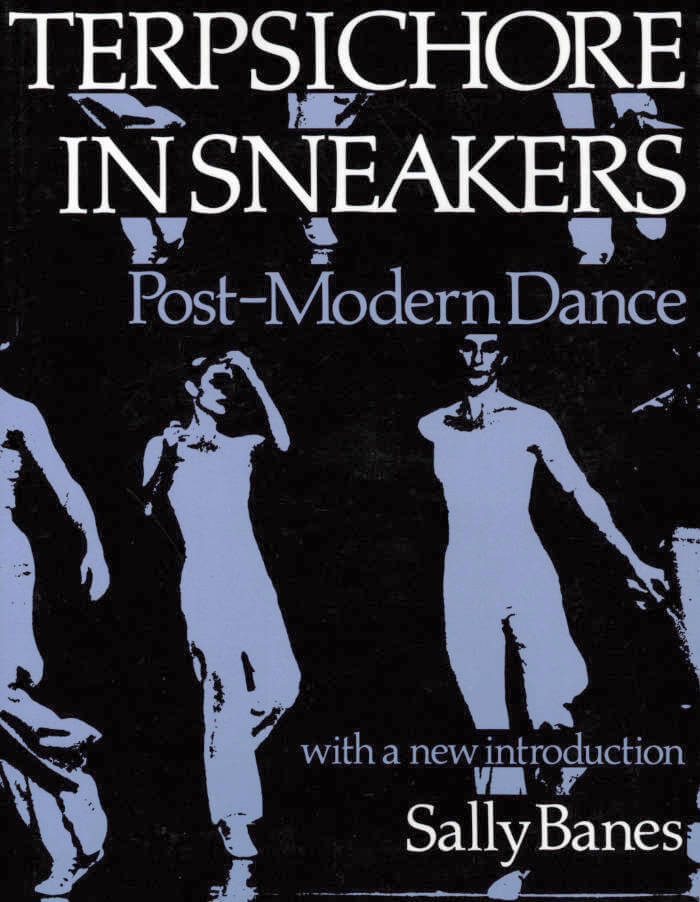Merce Cunningham
Merce Cunningham

Notes on Choreography
On the occasion of Merce Cunningham's centennial comes this edition of his classic and long-out-of-print artist's book Changes: Notes on Choreography, first published in 1968 by Dick Higgins' Something Else Press. The book presents a revealing exposition of Cunningham's compositional process by way of his working notebooks, containing in-progress notations of individual dances with extensive speculations about the choreographic and artistic problems he was facing.
Illustrated with over 170 photographs and printed in color and black and white, the book was described by its original publisher as "the most comprehensive book on choreography to emerge from the new dance ... [which] will come to stand with Eisenstein's and Stanislavsky's classics on the artistic process." By the time these notebooks were published, Cunningham had already led the Merce Cunningham Dance Company for 15 years, and had collaborated with Cage and others on milestones such as Variations V (1966) and RainForest (1968), the latter with Andy Warhol, David Tudor and Jasper Johns.
Along with his essay collection Dancing in Space and Time (1978), Changes is one of the most significant publications on Cunningham's enduring contributions to dance, which developed through collaboration with John Cage to incorporate formal innovation with regard to chance, silence and stillness.
And more

Tripwire 16
A special issue focused on performance writing, with work by Tanya Lukin Linklater (with Michael Nardone), Jibade-Khalil Huffman & Simone White, Jean-Thomas Tremblay, Claudina Domingo (trans. Ryan Greene), Kim Rosenfield, Nathan Walker, Liz Knox, Rona Lorimer, Léo Richard, & Hector Uniacke, Mohamed A. Gawad & Dalia Neis, Mei-mei Berssenbrugge & Teddy Yoshikami, interviewed by Michelle N. Huang, Kyoo Lee and Jocelyn Saidenberg, Adriana Garriga-López, Gabrielle Civil, plus a Kevin Killian Tribute, with Eileen Myles * Scott Hewicker * Cliff Hengst * Karla Milosevich * Craig Goodman * Michelle Rollman * Anne McGuire * Wayne Smith * Tanya Hollis * Steve Orth * Lindsey Boldt * Maxe Crandall * Arnold J. Kemp * Carla Harryman, Lee Ann Brown & Tony Torn * Susan Gevirtz * Laynie Browne * Patrick Durgin * Norma Cole * Jo Giardini. & reviews: Jessica Lopez Lyman & Jocelyn E. Marshall on Gabrielle Civil, alex cruse on Merce Cunningham, Rob Stanton on Anne Boyer, Jack Chelgren on Miyó Vestrini, David Grundy on Stephen Jonas, Virginia Konchan on Sarah Vap.

Traces of Dance
Traces of Dance brings together scores, drawings, sketches, notes, graphics and paintings, which contributes to define a textuality of movement between writing and image.
The drawings and notations of choreographers rarely come before the public eye; and yet they are far more than simple memory aids. Several types of speech and writing have been called upon to lead the viewer's perception through the traces that the dancing body lays down. While these texts are not all concerned with the specific practices of dance, they all deal with the most profound contribution that a knowledge of the moving body brings to our culture, to our lives.
With Georges Appaix, Dominique Bagouet, Trisha Brown, Lucinda Childs, Régine Chopinot, Merce Cunningham, Philippe Decouflé, Raoul-Auger Feuillet, Roxane Huilmand, Isaac, Anne Teresa De Keersmaeker, Rudolf Laban, Daniel Larrieu, Jean-Marc Matos, Dana Reitz, Hervé Robbe, Kellon Tomlinson, Mary Wigman, André Lorin, Vaslav Nijinski, Louis-Guillaume Pécour, Pierre Rameau, Bob Wilson.
Texts by Daniel Dobbels, Jean-Noel Laurenti, Laurence Louppe, Valérie Preston-Dunlop, René Thom, Paul Virilio.

Terpsichore in Sneakers: Post-Modern Dance
Drawing on the postmodern perspective and concerns that informed her groundbreaking Terpischore in Sneakers, Sally Bane's Writing Dancing documents the background and development of avant-garde and popular dance, analyzing individual artists, performances, and entire dance movements. With a sure grasp of shifting cultural dynamics, Banes shows how postmodern dance is integrally connected to other oppositional, often marginalized strands of dance culture, and considers how certain kinds of dance move from the margins to the mainstream.
Banes begins by considering the act of dance criticism itself, exploring its modes, methods, and underlying assumptions and examining the work of other critics. She traces the development of contemporary dance from the early work of such influential figures as Merce Cunningham and George Balanchine to such contemporary choreographers as Molissa Fenley, Karole Armitage, and Michael Clark. She analyzes the contributions of the Judson Dance Theatre and the Workers' Dance League, the emergence of Latin postmodern dance in New York, and the impact of black jazz in Russia. In addition, Banes explores such untraditional performance modes as breakdancing and the drunk dancing of Fred Astaire.

Handbook in Motion: An Account of an Ongoing Personal Discourse and Its Manifestations in Dance
Tracing a period in her life from the 1969 Woodstock Festival through the following years living on the land, this singular dance artist's direct and poetic writings bring a turbulent transitional era to life. Arriving in New York in the early 60's from California, she brought with her a series of pieces that proved to be a serious influence on the development of "postmodern" dance in years to come. Her "dance-constructions" were based on a concern with bodies in action, the movement not being stylized or presented for its visual line but rather as a physical fact. Combining drawings, "dance reports" (short descriptions of events whose movement made a deep impression on the author's memory), and documentary materials such as scores, descriptions, letters to colleagues, and photographic records of performances, Forti's eye toward creating idioms for exploring natural forms and behaviors is evident throughout.
Simone Forti shifted from painting in 1955 to study dance with Anna Halprin and went on to study composition with Robert Dunn at the Merce Cunningham Studio leading to her association with Judson Dance Theater in the '60s. Her work spans from early minimalist dance-constructions, through animal movement studies, news animations, land portraits, and currently, Logomotion, an improvisational form based on the resonance between movement and the spoken word. She performs and teaches worldwide.